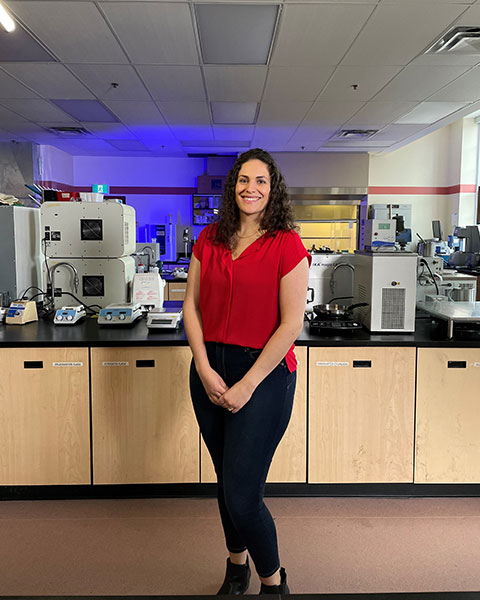2024 Technical Program
Edible Applications Technology
2024 Award Winner
Oil structuring via minor incorporation of cellulosic and wax components for reduction of oil loss in high protein plant-based cheese

Stacie Dobson, MSc (she/her/hers)
PhD Candidate
University of Guelph
University of Guelph
Guelph, Ontario, Canada- EP
Erica Pensini
Associate Professor
University of Guelph
Guelph, Ontario, Canada .jpg)
Alejandro G. Marangoni, PhD (he/him/his)
O.C., F.R.S.C. Professor and Tier I Canada Research Chair
University of Guelph
Guelph, ON, Canada
Presenting Author(s)
Co-Author(s)
Novel high protein plant-based cheese was developed containing upwards of 18%w/w protein, matching the nutritional protein value of processed dairy cheese. The novel formulation exhibits superior melting and stretch compared to commercial plant-based cheeses. The product, however, displayed significant oil loss, a property associated with natural dairy cheese but often limited in processed cheese products. Incorporation in the coconut oil (CO) fraction of, 1%w/w Ethyl cellulose (EC), 2%w/w beeswax (BW), or 2%w/w candelilla wax (CW) were explored as structural additives to modulate oil loss in the cheese formulation. Incorporating the structurants significantly decreased the oil loss, reaching 0%, 10%, and 1.5% for EC, BW and CW, respectively, a vast reduction from the original measure of 97% oil saturation. The decrease in oil loss took place while maintaining excellent melt, reaching an average 100% spread for all structurants. The oil modulation mechanisms were further explored on the fat/oil fraction only; incorporation of EC had no effect on endothermic phase transitions of coconut oil, with the peak melt temperature of 26.5oC maintained. The addition of BW or CW, however, decreased the peak melt temperature to 25.2oC and increased the enthalpy, suggesting a change in crystal structure. The waxes also enabled a greater viscosity to be maintained at lower temperatures, while EC demonstrated greater viscosity across the entire temperature range. The wax samples also caused increased maximum surface pressure observed through surface tension measurements where EC did not affect the maximum surface pressure compared to coconut oil but displayed multiple points of film buckling. The sturcturants modulated oil loss through a variety of mechanisms, including increased viscosity, changes in crystal structure and changes in surface properties. Ultimately, all mechanisms successfully reduced the oil loss of the cheese samples, while maintaining the expected cheese functionalities.

.jpg)